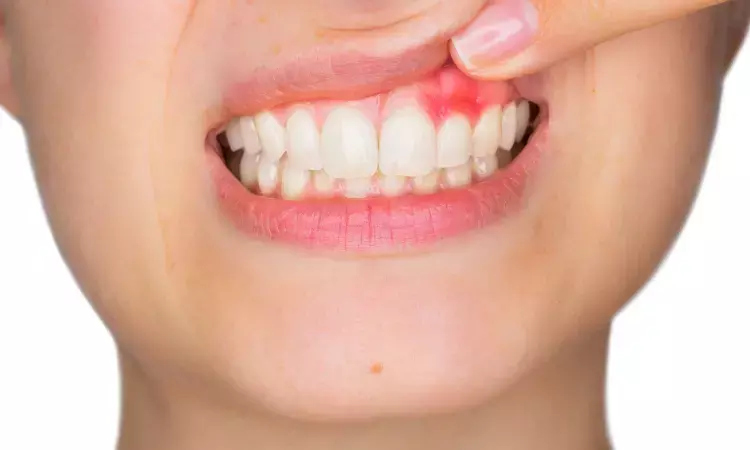- Home
- Medical news & Guidelines
- Anesthesiology
- Cardiology and CTVS
- Critical Care
- Dentistry
- Dermatology
- Diabetes and Endocrinology
- ENT
- Gastroenterology
- Medicine
- Nephrology
- Neurology
- Obstretics-Gynaecology
- Oncology
- Ophthalmology
- Orthopaedics
- Pediatrics-Neonatology
- Psychiatry
- Pulmonology
- Radiology
- Surgery
- Urology
- Laboratory Medicine
- Diet
- Nursing
- Paramedical
- Physiotherapy
- Health news
- Fact Check
- Bone Health Fact Check
- Brain Health Fact Check
- Cancer Related Fact Check
- Child Care Fact Check
- Dental and oral health fact check
- Diabetes and metabolic health fact check
- Diet and Nutrition Fact Check
- Eye and ENT Care Fact Check
- Fitness fact check
- Gut health fact check
- Heart health fact check
- Kidney health fact check
- Medical education fact check
- Men's health fact check
- Respiratory fact check
- Skin and hair care fact check
- Vaccine and Immunization fact check
- Women's health fact check
- AYUSH
- State News
- Andaman and Nicobar Islands
- Andhra Pradesh
- Arunachal Pradesh
- Assam
- Bihar
- Chandigarh
- Chattisgarh
- Dadra and Nagar Haveli
- Daman and Diu
- Delhi
- Goa
- Gujarat
- Haryana
- Himachal Pradesh
- Jammu & Kashmir
- Jharkhand
- Karnataka
- Kerala
- Ladakh
- Lakshadweep
- Madhya Pradesh
- Maharashtra
- Manipur
- Meghalaya
- Mizoram
- Nagaland
- Odisha
- Puducherry
- Punjab
- Rajasthan
- Sikkim
- Tamil Nadu
- Telangana
- Tripura
- Uttar Pradesh
- Uttrakhand
- West Bengal
- Medical Education
- Industry
Echo-intensity characterization at implant sites: Unveiling novel diagnostic ultrasonographic markers for peri-implantitis

USA: A recent study published in the Journal of Clinical Periodontology revealed a significant difference in high-frequency ultrasound (HFUS) echo intensity (EI) characterization of peri-implant tissues between healthy and disease sites; healthy tissues exhibited higher EI values.
"HFUS EI and the absence/presence of a hypoechoic supracrestal area (HSA) may be valid diagnostic ultrasonographic markers to discriminate peri-implant health status," the researchers wrote.
In the realm of dental implantology, peri-implantitis stands as a significant challenge, threatening the longevity and success of dental implants. With conventional diagnostic methods often lacking in sensitivity and specificity, researchers have turned to ultrasonography as a promising avenue for early detection and characterization of peri-implant tissue changes. Recent advancements in this field have unveiled novel diagnostic ultrasonographic markers, shedding light on echo-intensity characterization at implant sites and offering hope for improved management of peri-implantitis.
Peri-implantitis, characterized by inflammation and bone loss around dental implants, poses a considerable risk to implant stability and patient oral health. Timely detection and accurate assessment of peri-implant tissue changes are crucial for effective intervention and prevention of further complications. Traditional diagnostic methods, such as probing and radiography, have limitations in detecting early stages of peri-implantitis and assessing soft tissue alterations.
Ultrasonography emerges as a non-invasive, cost-effective imaging modality with the potential to overcome these limitations. By utilizing high-frequency sound waves, ultrasonography enables real-time visualization of peri-implant tissues, including soft tissue thickness, bone morphology, and vascularity. Considering this, Maria Elisa Galarraga-Vinueza, Tufts University School of Dental Medicine, Boston, Massachusetts, USA, and colleagues aimed to apply HFUS echo intensity for characterizing peri-implant tissues at healthy and diseased sites and to investigate the possible ultrasonographic markers of health versus disease.
For this purpose, the researcher assessed sixty patients presenting 60 implants diagnosed as healthy (N = 30) and peri-implantitis (N = 30) with HFUS. HFUS scans were imported into software where first-order greyscale outcomes [i.e., mean echo intensity] and second-order greyscale outcomes were assessed.
Other ultrasonographic outcomes of interest involved the vertical extension of the hypoechoic supracrestal area (HSA), buccal bone dehiscence (BBD), and soft-tissue area (STA) among others.
The study led to the following findings:
- HFUS EI mean values obtained from peri-implant soft tissue at healthy and diseased sites were 122.9 ± 19.7 and 107.9 ± 24.7 grey levels (GL), respectively.
- All the diseased sites showed the appearance of an HSA that was not present in healthy implants (area under the curve = 1).
- The proportion of HSA/STA was 37.9% ± 14.8%.
- Regression analysis showed that the EI of the peri-implant soft tissue was significantly different between healthy and peri-implantitis sites (odds ratio 0.97).
"Our study observed significant differences in mean EI between healthy and peri-implantitis sites, with healthy tissues exhibiting higher EI values. The presence of a hypoechoic supracrestal area was exclusively found in diseased sites, serving as a reliable marker for peri-implantitis," the researchers wrote.
In conclusion, HFUS is a real-time and non-invasive diagnostic tool that provides a comprehensive assessment of peri-implant tissue structures and might be used for diagnosing peri-implant health status.
Reference:
Galarraga-Vinueza, M. E., Barootchi, S., Mancini, L., Sabri, H., Schwarz, F., Gallucci, G. O., & Tavelli, L. Echo-intensity characterization at implant sites and novel diagnostic ultrasonographic markers for peri-implantitis. Journal of Clinical Periodontology. https://doi.org/10.1111/jcpe.13976
Dr Kamal Kant Kohli-MBBS, DTCD- a chest specialist with more than 30 years of practice and a flair for writing clinical articles, Dr Kamal Kant Kohli joined Medical Dialogues as a Chief Editor of Medical News. Besides writing articles, as an editor, he proofreads and verifies all the medical content published on Medical Dialogues including those coming from journals, studies,medical conferences,guidelines etc. Email: drkohli@medicaldialogues.in. Contact no. 011-43720751


